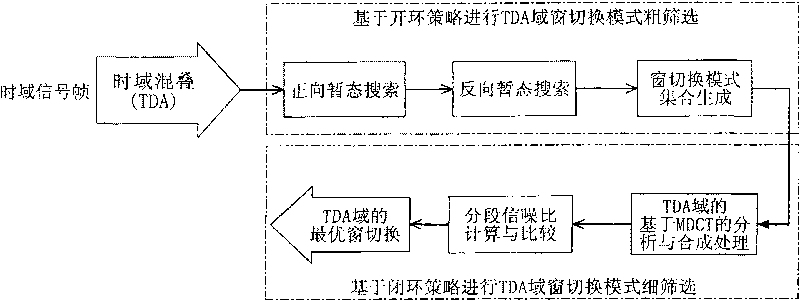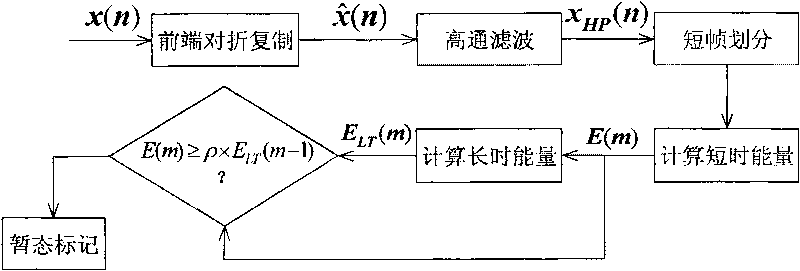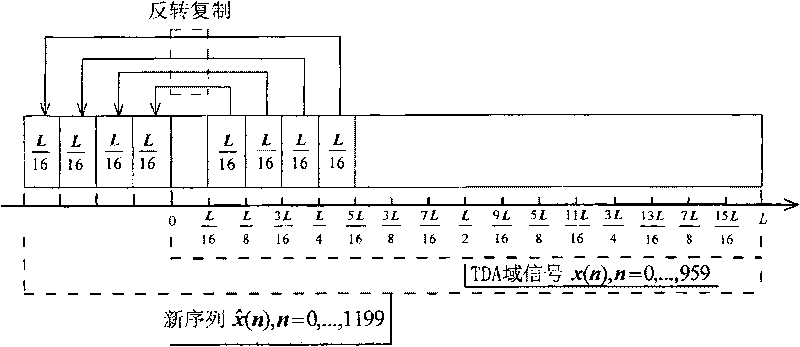Self-adaptive window switching method based on TDA domain
An adaptive and switching mode technology, applied in the field of audio coding, which can solve the problems that the resolution of the time-frequency analysis effect cannot meet the demand and the quality of the reconstructed signal is degraded, so as to improve the time-frequency analysis effect, reduce the complexity, and eliminate the pre-echo distortion. Effect
- Summary
- Abstract
- Description
- Claims
- Application Information
AI Technical Summary
Problems solved by technology
Method used
Image
Examples
Embodiment Construction
[0045] The present invention will be further described below in conjunction with the accompanying drawings and embodiments.
[0046] In the example of the present invention, the audio encoder inputs an audio signal sampled at 48kHz, and the processing bandwidth is 20Hz-20kHz. The encoder divides the 16bit linear PCM input signal into 40ms frame length with 50% overlap between frames. The MDCT transformation coding adopts TDA combined with DCT-IV type, that is, the input of MDCT transformation is 2*L=1920 points, then the number of points after TDA operation is L=960, such as figure 1 , figure 2 , Figure 4 shown.
[0047] In this embodiment, the adaptive window switching mode of the TDA domain involves a total of 10 window types (see Figure 5 ): symmetric window type of 4 subframes, symmetrical window type of 8 subframes, left edge window type of 4 subframes, right edge window type of 4 subframes, left edge window type of 8 subframes, right edge window type of 8 subframe...
PUM
 Login to View More
Login to View More Abstract
Description
Claims
Application Information
 Login to View More
Login to View More - R&D
- Intellectual Property
- Life Sciences
- Materials
- Tech Scout
- Unparalleled Data Quality
- Higher Quality Content
- 60% Fewer Hallucinations
Browse by: Latest US Patents, China's latest patents, Technical Efficacy Thesaurus, Application Domain, Technology Topic, Popular Technical Reports.
© 2025 PatSnap. All rights reserved.Legal|Privacy policy|Modern Slavery Act Transparency Statement|Sitemap|About US| Contact US: help@patsnap.com



